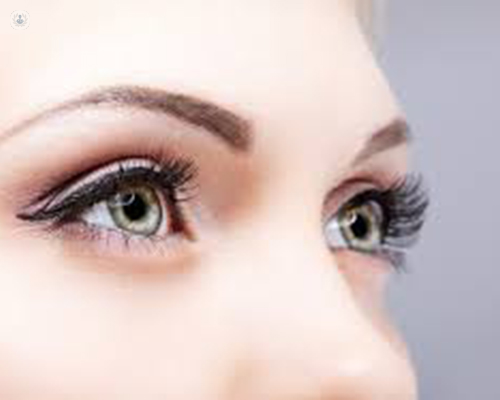Blepharospasm: an expert overview
Autore:In this article, Mr Daniel Ezra, an esteemed London-based consultant ophthalmic and oculoplastic surgeon, explains what blepharospasm is, details the symptoms and causes, and describes how the condition is diagnosed.

What is blepharospasm?
Blepharospasm is a rare neurological condition which leads to the involuntary blinking or spasming of the eyelids. In some patients, it can present itself as rapid and frequent blinking, forced eyelid closure, or an inability to open the eyes (apraxia of eyelid opening). Occasionally, it can, unfortunately, be a combination of all of the abovementioned.
Blepharospasm can be a disabling condition, which can also go onto effect other facial muscles, not just the eyelids. In fact, up to 30 per cent of patients also experience involuntary tongue, mouth, and neck movements.
The condition can so too have a significant impact on an individual’s vision, and, occasionally, the muscles of the larynx (voice-box) can become affected, leading to a hoarse or whispering voice.
What causes blepharospasm?
When it comes to the causes, there is certainly a genetic predisposition, and many patients will report a family history, including chronic irritation of the eyes. Our recent research at Moorfields Eye Hospital in London has also shown that blepharospasm patients have an underlying abnormality in the nerve layer of the corneal epithelium (the outer layer of the cornea of the eye) and associated decreased sensitivity of the ocular surface.
Similar sensory abnormalities have been identified in other dystonias and neurological movement disorders, in which sustained or repetitive muscle contractions result in twisting or abnormal fixed postures. This suggests that decreased sensory stimulation to the brain can cause an input/output mismatch, which can cause blepharospasm.
What are the symptoms of blepharospasm?
In the early stages, symptoms include frequent and involuntary blinking of the eye muscles, as well as eye irritation. Patients may also find themselves experiencing fatigue, emotional tension, and sensitivity to bright lights.
As the condition develops, symptoms may become more common and it may become increasingly difficult for patients to keep their eyes open, often for several minutes. In severe cases, this can affect vision and can cause a person to become functionally blind.
In most cases, spasms occur during the daytime, which often means that the problem ceases when a person is asleep.
How is blepharospasm diagnosed?
Blepharospasm is diagnosed through a clinical eye examination which is carried out by either a neurologist or an ophthalmologist, as well as a discussion of symptoms and patient history.
How is blepharospasm treated?
There is currently no cure for blepharospasm, but several treatment options exist to help manage the condition and reduce the severity of one's symptoms. The first step in treating blepharospasm is to identify and eliminate any cause for ocular surface irritation. This will be carried out using a full slit lamp biomicroscope examination.
Simple treatment measures start with keeping the eyes comfortable by using eye drops, wearing specialist sunglasses, and occasionally, covering one eye. All of these measures can help prevent spasms for a short while at least. The most effective treatment option, however, is the use of Botulinum toxin type A (BoNT injections).
The BoNT treatment will take effect between three to five days after treatment, with the full effect being seen after roughly two weeks. After this, there should be a significant reduction in eyelid spasms.
In addition to Botox injections, in some patients, surgery can also be highly effective. The type of surgery would be tailored to the specific problems that the patient presents with and would include brow lifting, blepharoplasty, ptosis surgery or internal brow suspension.
Book a consultation with Mr Daniel Ezra today if you are worried that you might have blepharospasm. You can do just that by visiting his Top Doctors profile.


